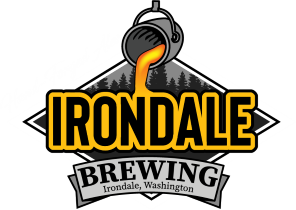First Brew in the New Space!
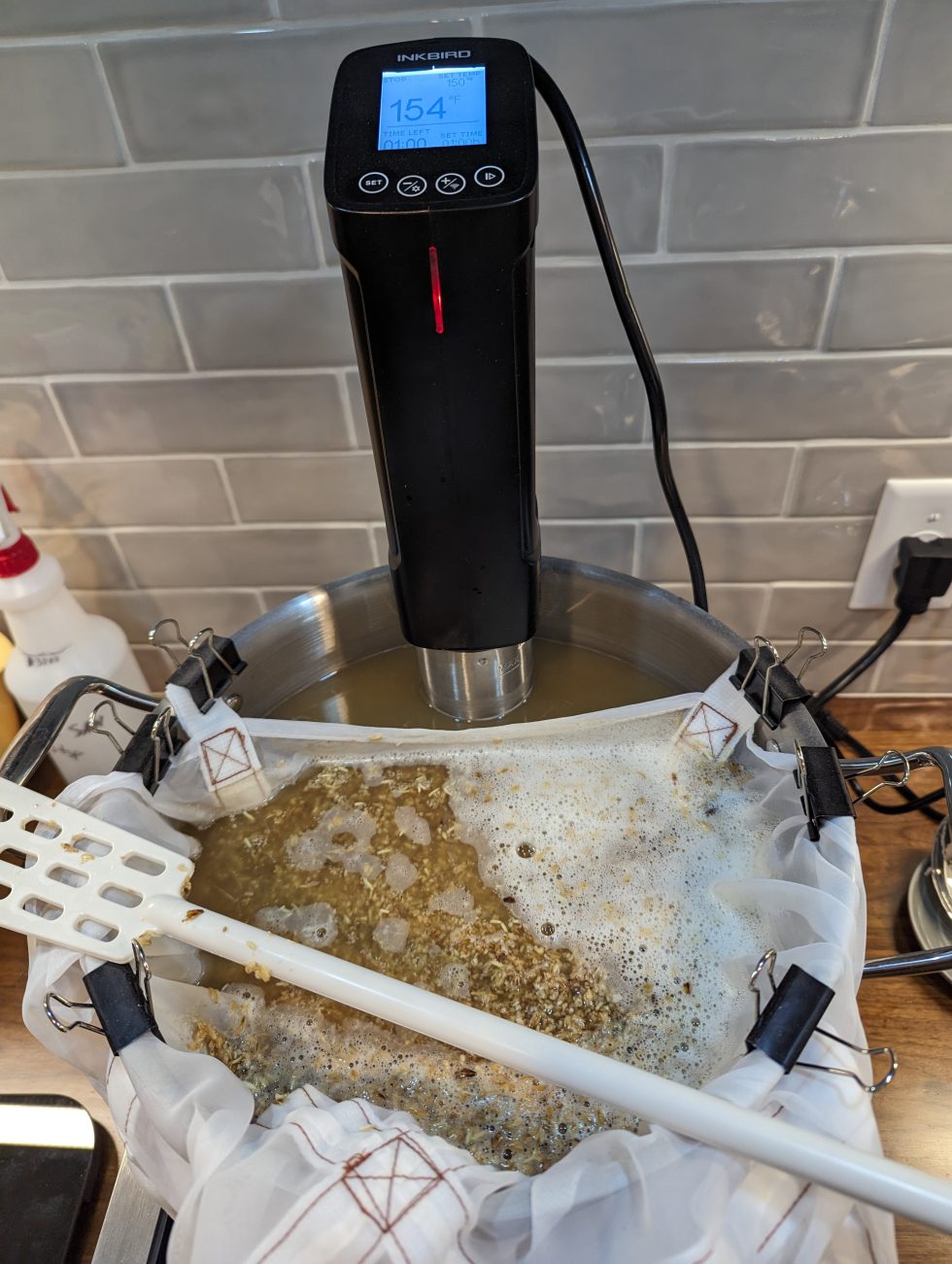
From first breaking ground on the new garage in 2020 to finishing out the dedicated brewing space as my wife and I had time, the day finally arrived! And since I didn't start the website until long after, this post covers everything from brewing, to kegging, to tasting on the inaugural brew, which was a one-gallon all-grain amber ale from SoCo Homebrew.
Equipment
I have several different equipment options ranging from a couple of different induction cooktops (one 120V, one 240V), kettles ranging from 2 gallons to 10 gallons, and a Gigawort, but for the first brew I decided to go with the 240V induction cooktop and a sous vide to maintain mash temperature.

Sous Vide Controversy?
I've heard mixed opinions on using a sous vide stick in brewing. Technically speaking a sous vide is designed to only have water flowing through it, and in normal use won't ever come into contact with the food it's cooking since the food is sealed in plastic, so some folks question its safety for use in brewing, even throwing around terms like "heavy metal leakage."
From what I can tell the sous vide stick I have is all stainless steel, and since I'm using a brew bag the interaction with anything but liquid with the stick itself should be minimal, but in a way I get the concern.
That said, for small batch brewing something that maintains temperature and circulates the wort a bit seems pretty ideal, so I decided to give it a shot.
The Brew Day
The brew day itself went as smoothly as could be expected in a new space with all new equipment. Having a dedicated brew space is awesome, and a luxury for which I need to thank my ever-patient and understanding wife since she gave up 1/3 of the new garage for this to happen. Sure, it also keeps all my brewing stuff out of the kitchen in the house, but still this is a major indulgence that is greatly appreciated.
One unexpected thing I did run into is that with the door and windows all closed, running the vent hood made the mini split mad, and toward the end of the boil it started making angry noises and a bit of water started dripping down the wall. So my first lesson from the first brew day in the new space was to turn off the mini split while you're brewing.
I ferment in this space as well and keep the mini split set to 70 degrees F since that seems to result in a good ambient temperature in most areas of about 68 degrees F. On my future equipment list is a RAPT Fermentation Chamber, but for now cracking a window and turning off the mini split for a couple of hours doesn't seem to have a major negative impact on the overall temperature in the space.
I also noticed some condensation on my vent hood toward the end of the boil, and since I'm backfilling my blog I'll say that's an issue you can read about it later posts since it's annoying me enough that I'm going to make a change in vent hoods one way or another.
Fermentation
 And the yeast goes in!
And the yeast goes in!
Fermentation went well. I didn't take gravity readings for this batch (I do that rather inconsistently but am trying to get better), so I just waited for it to ferment at 68F for a full two weeks before kegging. And yes, I covered the fermenter with a dark towel and the brewing space is dark most of the time.
This was also my first time using the Northern Brewer Little Big Mouth Bubbler, and I really love these little fermenters. The total volume of these fermenters is 1.4 gallons so they're perfect for a gallon or so of wort volume (I tend to shoot for 1.25 gallons going into the fermenter) with plenty of headspace.
The only issue I had the first time using these was a very small leak on the bottom of the spigot, but that was my fault. The rubber gaskets that come with these fermenters have a flat side and a slightly rounded side, so the trick is to make sure the flat side is against the spigot (or facing the nut on the inside), and that the rounded side goes up against the hole in the fermenter. Paying attention to that I haven't had any leaking on future batches.
Kegging
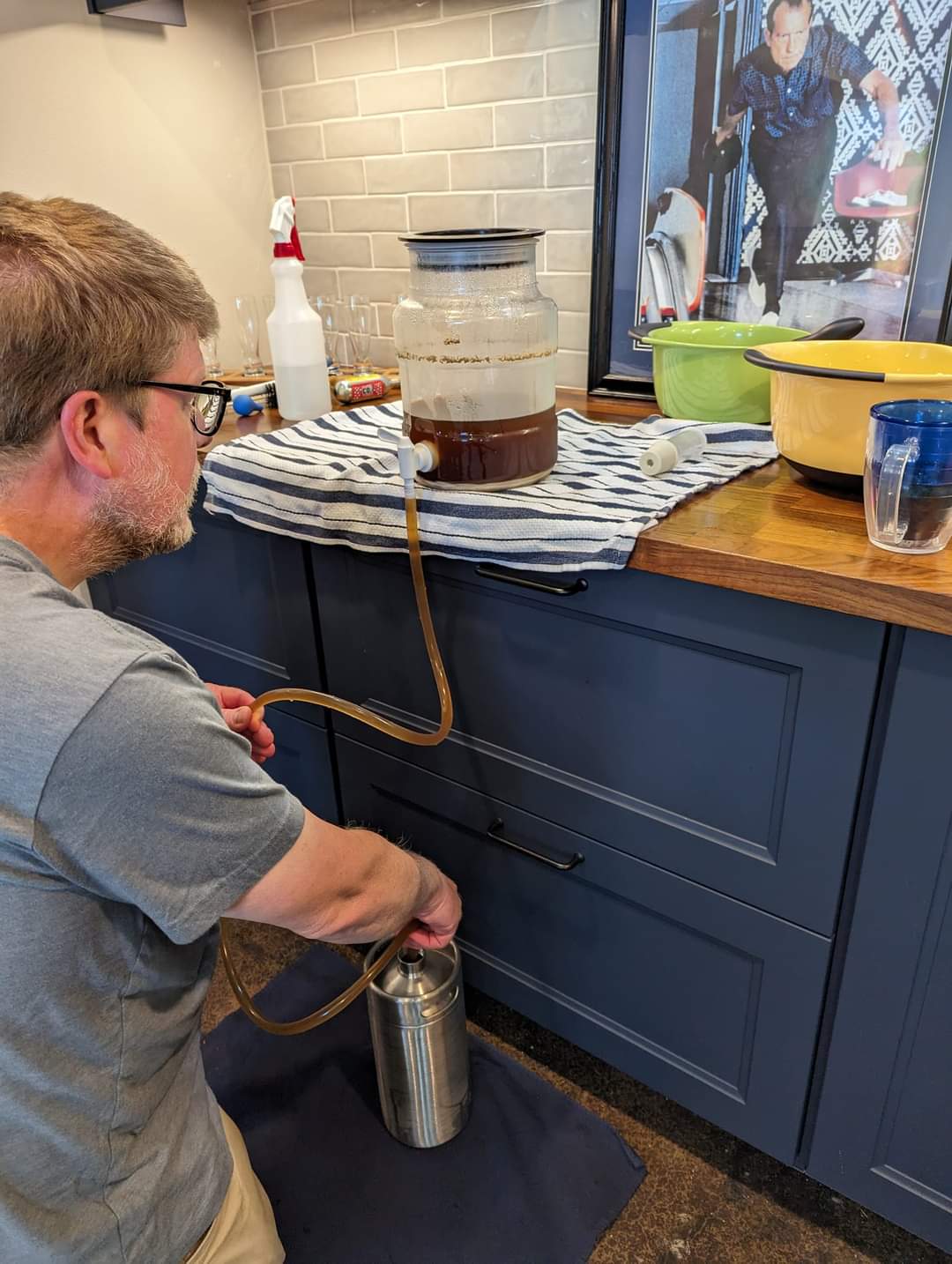
Getting going with my "second act" of brewing (short version: I brewed a lot in the 1990s and took a substantial break before starting again) I decided to go right to kegging. Sure, you could argue that with one-gallon batches you're only dealing with about 8 bottles anyway, but one stainless steel mini keg is still less than 8 bottles. Plus, the waiting period isn't quite as long with force carbonating versus bottle conditioning, and it removes the possibility of the beer not carbonating for whatever reason.
High on my list of next things to add to the brewery is a kegerator, at which point I'll probably start doing more two-gallon batches and using 2.5-gallon kegs, but for now I'm really loving the convenience of these Northern Brewer one-gallon kegs.
I did change a couple of things from the stock version you get as a kit. First, I swapped out the stock lid with a ball lock lid, and second, I swapped out the stock faucet with the Picnic Tap 2.1. These things are awesome. They pour maybe a bit slowly but having flow control is huge since there's a big tendency on these small kegs to get a lot of foam when you're pouring, and I didn't want to add a length of hose on the outflow side.
I'm really happy with this setup for one-gallon batches. So happy in fact that I have four of these little things. Plus, if I ever want to take beer to a friend's, it's grab and go!
Tasting
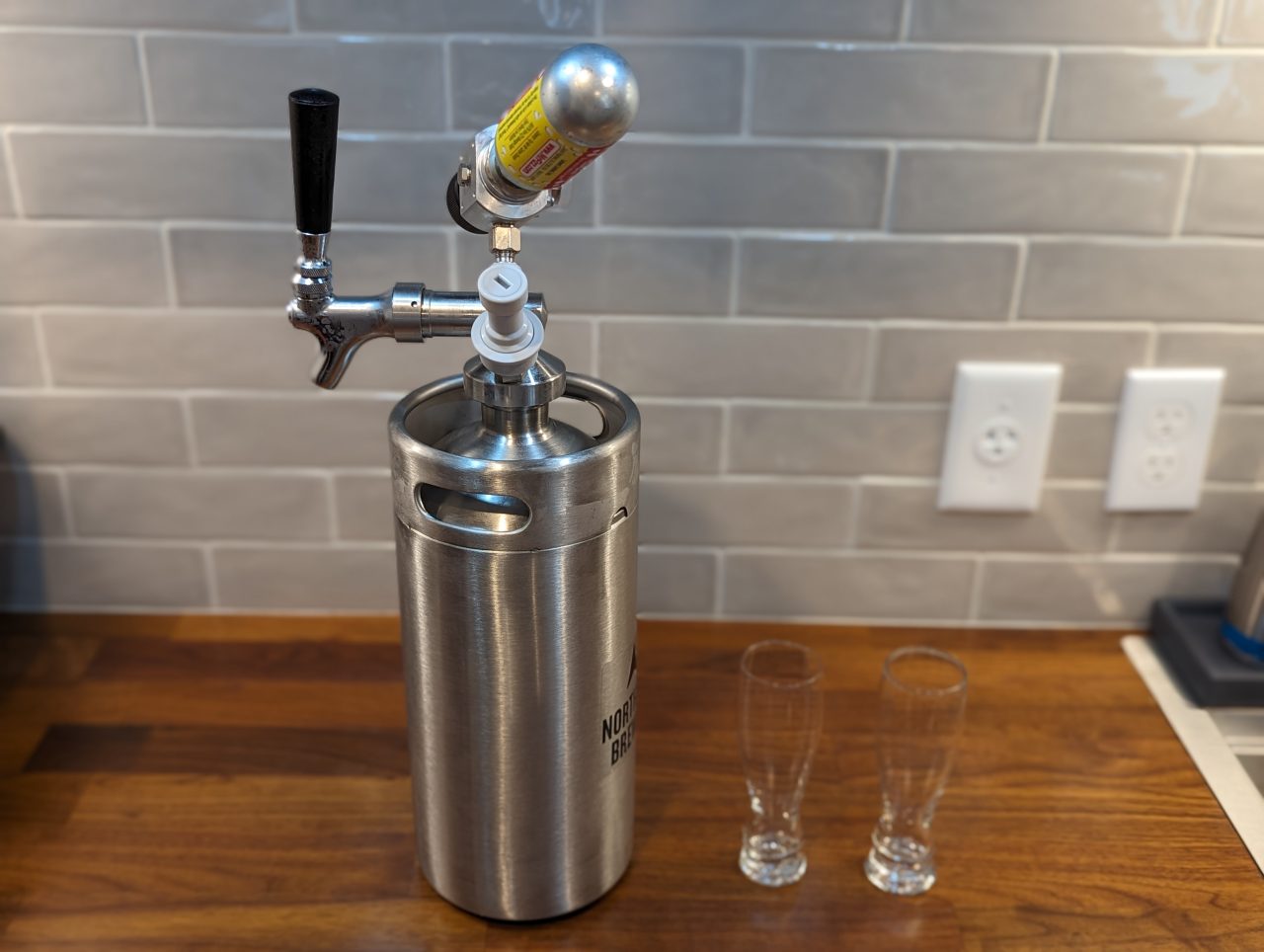
The day eventually came when it was time to taste the first beer made in the new brewery. I made it a whole week before breaking down and pouring a small sample, and it did not disappoint!
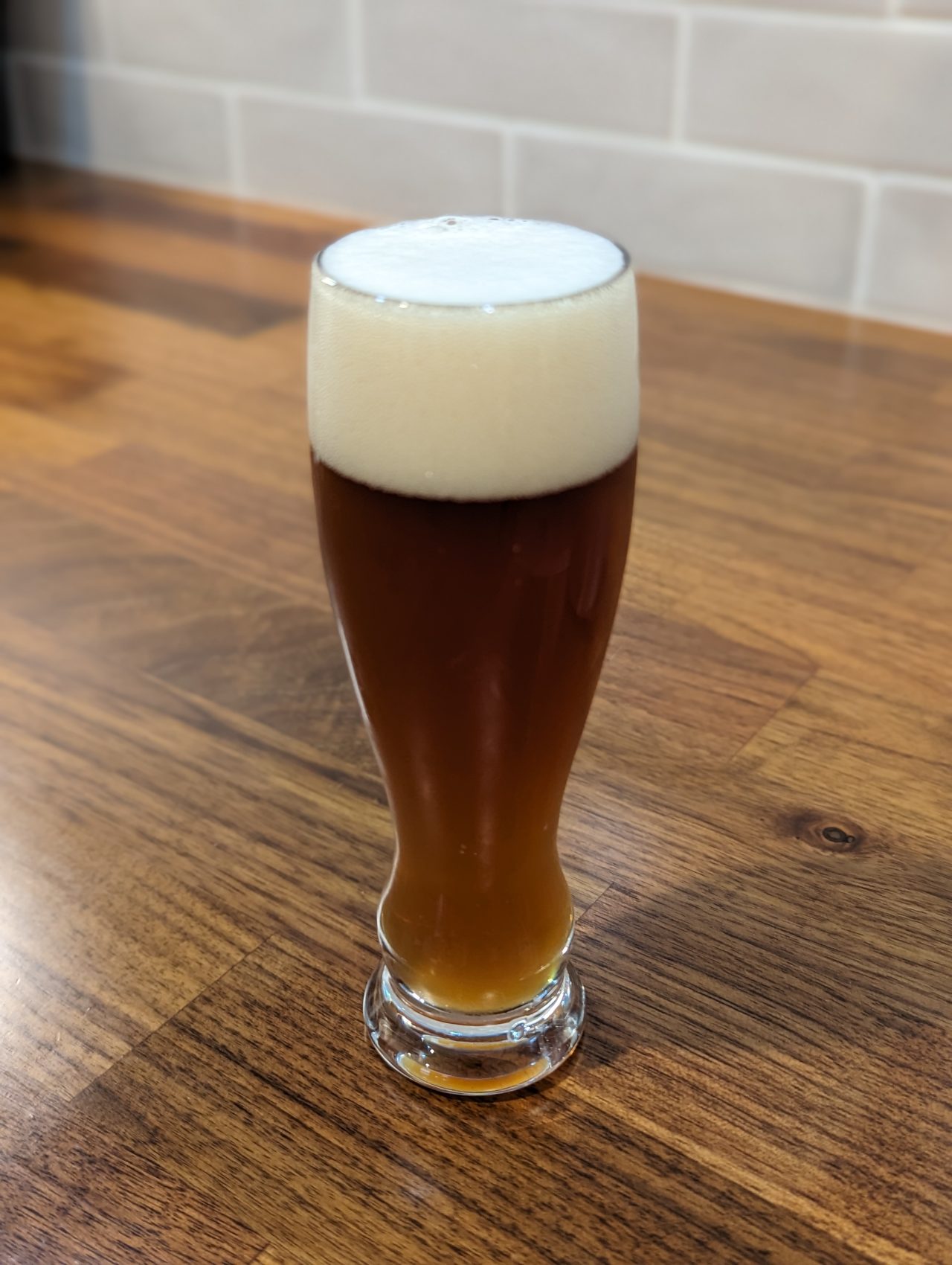
It cleaned up a bit as I let it sit in the keg a bit longer, both with respect to visual clarity and the taste coming together more, but the result of the first brew were very encouraging.
I had a few friends try it a week or so later and with that, the keg was emptied. One of them said, "I don't like beer that much but this is the best beer I've ever had," which I take with a grain of salt of course but that was still pretty high praise. And when people have an option to choose anything from my well-stocked selection of craft beers or have another one of these and they chose the homebrew, that made me smile as well.
Personally, I was pretty pleased with the results as well. For what I tend to look for and like in an amber it could be a bit more malt-forward and a bit more balanced on the hops -- on my palate it was a bit less full-bodied than I'd like and maybe just a tad overpowering with the hops -- but that's me being super nitpicky.
Onward!
All in all I'd definitely deem the first brew in the new space a success. I'm sure my process will refine as I get more used to the space and get back into the rhythm of brewing, but I'm already excited thinking about all the great beers I'll make here.
Cheers!
